
Feel free to add tags, names, dates or anything you are looking for
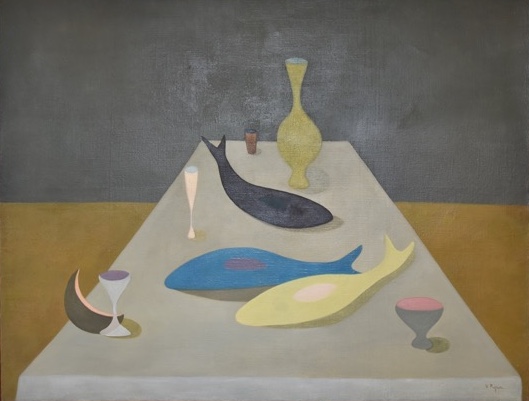

In 1965, an album of Vera Pagava’s (ვერა ფაღავა) sketches that included small-scale pencil drawings was published in Paris. Therein, by use of dots drawn with a tip of a graphite pencil, the artist presents the entire richness of nature. Through application of the simplest materials, she not only designs shapes that are perceived by the eye, but also makes us sense their dynamism, movement, and even hear the rustle of the leaves. And while contemplating these minimalistic graphic compositions, we can feel the light that is distributed throughout the space.
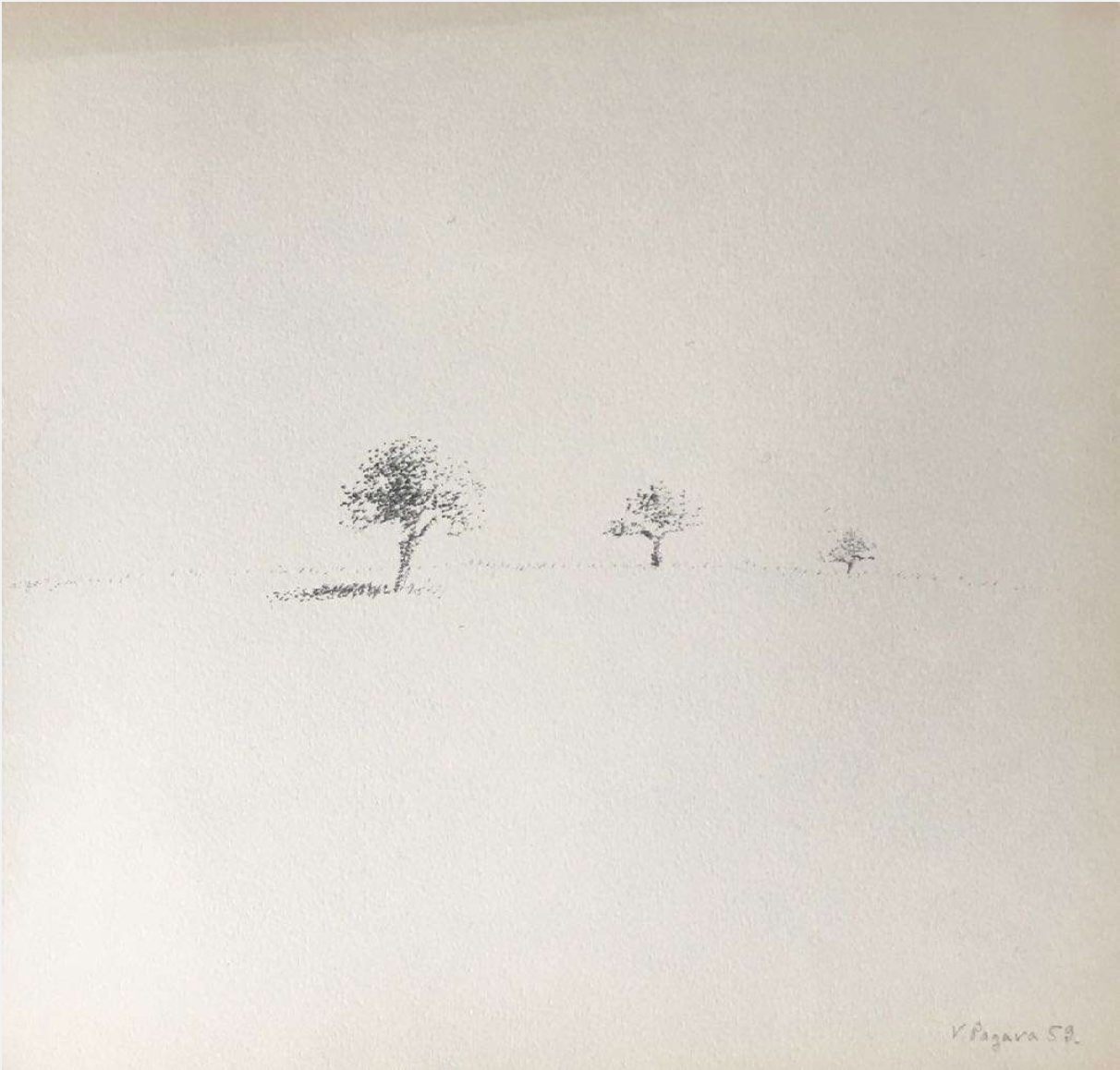
Vera Pagava. Untitled, from the "Ogny" sketchbook. 21x22. Graphite, paper.1959. Galerie Poggi, Paris/Courtesy of Association culturelle Vera Pagava - ACVP
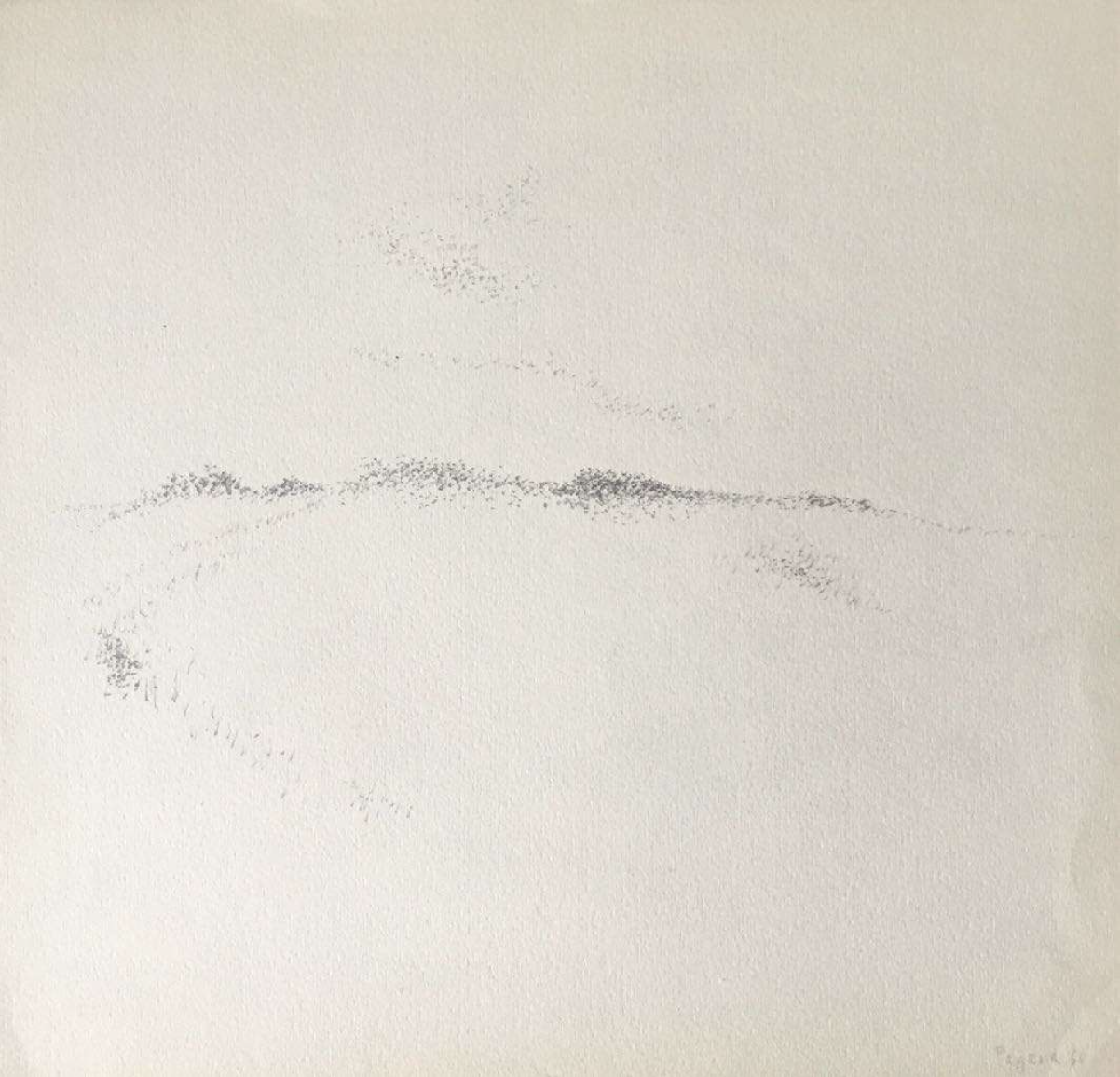
Untitled, 1960 from a sketchbook. 21x22. Graphite, paper. Galerie Poggi, Paris/Courtesy of Association culturelle Vera Pagava - ACVP
...
In 1923, 15-year-old Vera Pagava arrived in France together with her parents. In 1939 she graduated from the Académie Ranson in Paris, where her instructor was Roger Bissière (1886-1964). She befriended Nicolas Wacker (1897-1987), Roger Hilton (1911-1975), Maria Helena Vieira da Silva (1908-1992) and the other artists who, together with other representatives of the creative field at that time, shaped the artistic scene of Paris. Vera Pagava's life companion was also a Georgian emigrant, the artist Vano Enukidze (1907-1979). Her work reflected both classicist basics of painting and the modernist movements that retained their significance during that period (Metaphysical Painting, Cubism, Orphism, Surrealism, and especially Purism with its laconism and order). As a result, in the 1960s Vera Pagava became a representative of Lyrical Abstractionism.
_Archive_courtesy_of_Association_culturelle_Vera_Pagava_-_ACVP.jpg)
Portrait of artist Vera Pagava c. 1954 in front of a Still life painting at her studio in Montrouge, France (c) Archive courtesy of Association culturelle Vera Pagava - ACVP

Vera Pagava and Vano (Ivane Enoukidze) on the road in the country-side carrying canvases. unknown photographer (c) Archive courtesy of Association culturelle Vera Pagava - ACVP
Nevertheless, the path to Abstractionism was not short. In her works between 1940 and 1950, particular objects that are mostly isolated, silent, and remote from the world of being, can easily be read beyond the stylized images. Temples, towers, houses, streets, roofs, wine glasses, vases, teacups, and fishes... The artist was not interested in their real texture and color; instead she reduced the volumes of the images to localized color spots and made the contours graphically sharp. In addition, the paintings are full of space.

Vera Pagava. Nature Morte aux Poissons. Oil, canvas. 119x150. 1952. This work is part of ATINATI Private Collection

Vera Paghava. Still Life. 33x41. Oil, canvas. This work is part of ATINATI Private Collection. Photo by Gia Chkhatarashvili
_oil_on_canvas_116x146cm_vera_pagava_courtesy_of_Association_culturelle_Vera_Pagava_-_AC_VP.jpg)
Vera Pagava. Still Life with duck (Nature morte au canard). 116x146. Oil, canvas. 1952. Courtesy of Association culturelle Vera Pagava - ACVP
The focus of Pagava's observation is often directed not so much towards an object, but the transparency of glass and liquid; the power of intersecting light and the intensity of the colors.
Exaggerated shadows are also a mixture of light. As a whole, colorful sections create a harmonious rhythm and inner dynamics of the composition.
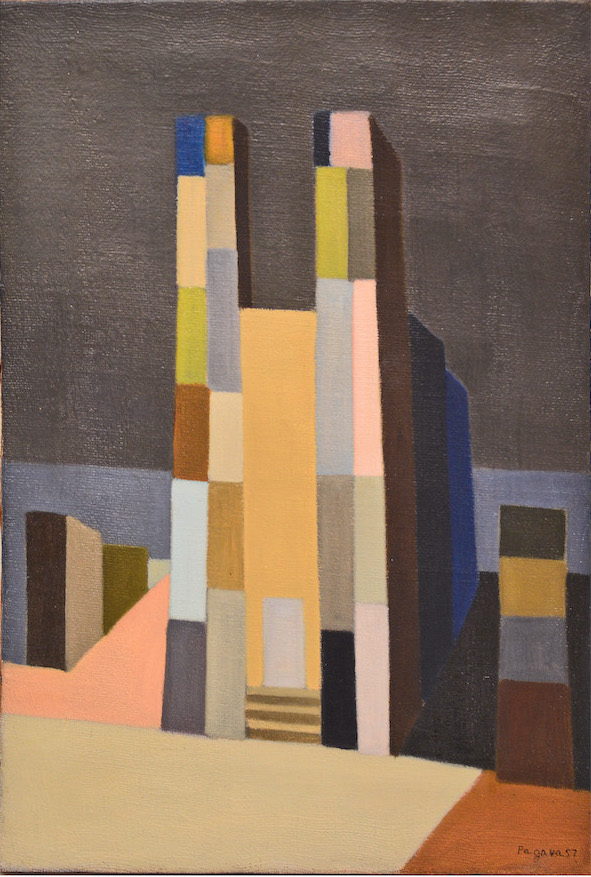
Vera Pagava. Untitled. 55x38. Oil, canvas. 1957. This work is part of ATINATI Private Collection
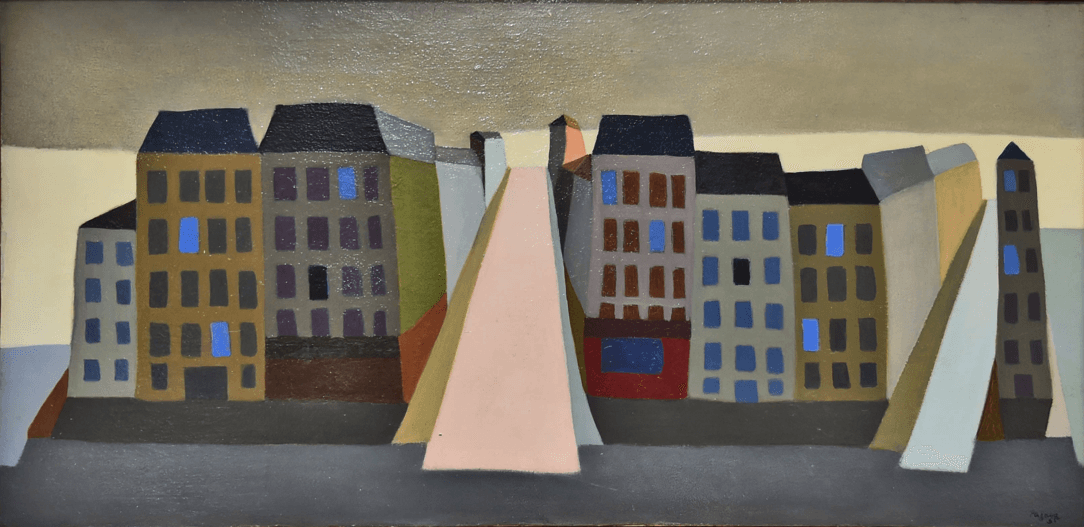
Vera Pagava. Ville Provinciale. Oil, panel. 1955. 33x68. This work is part of ATINATI Private Collection

Vera Pagava. The Campanile. 78x93. Oil, wood. 1957. Musee d'art Moderne de la Ville de Paris/Courtesy of Association culturelle Vera Pagava - ACVP
In 1944, the renowned Jeanne Bucher gallery hosted an exhibition of Vera Pagava and Dora Maar (1907-1997). Afterwards, the same gallery organized numerous shows of the artist’s works.
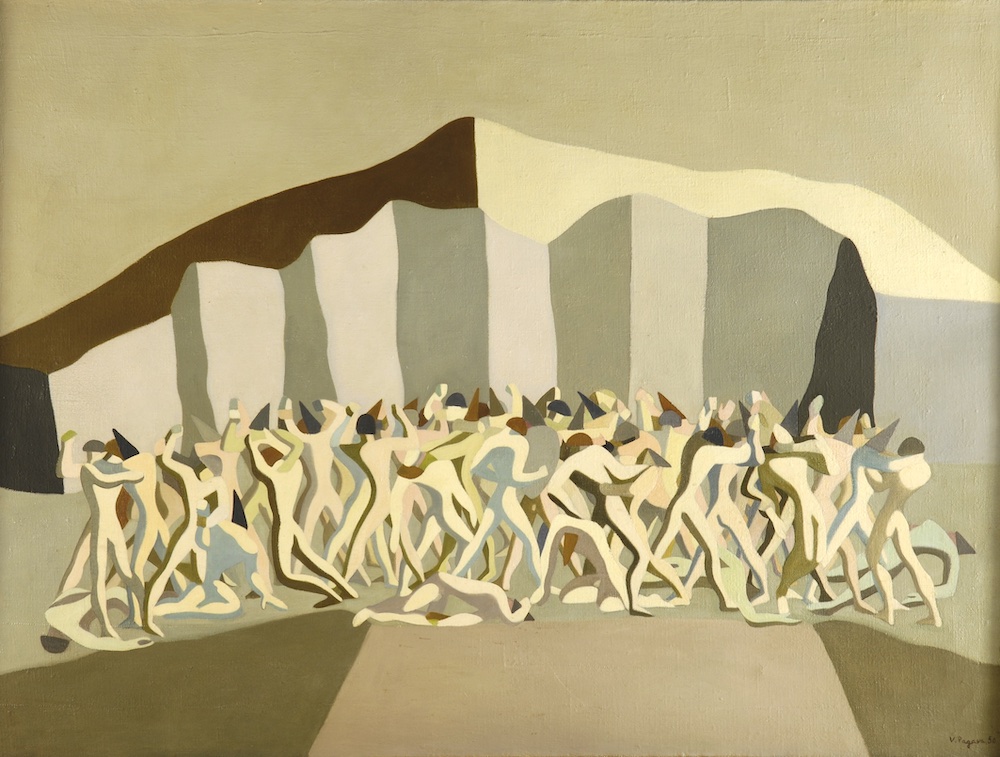
Vera pagava. The Battle of Thermopylae. 130x162. Oil, canvas. 1950. Courtesy of Association culturelle Vera Pagava - ACVP
_oil_on_canvas_98x146cm_vera_pagava_courtesy_of_Association_culturelle_Vera_Pagava_-_AC_VP.jpg)
Vera pagava. The Secret City (La Ville secrète). Oil, canvas. 98x146. 1959. Courtesy of Association culturelle Vera Pagava - ACVP
In the 1970s and 1980s, Vera Pagava often placed very few geometric figures of different colors on a picture plane. These include a rectangle, a triangle, a circle, or geometric bodies of different shapes created by her.. These abstractions present the author as a poetically-minded, highly sophisticated master.
_oil_on_canvas_73x92cm_vera_pagava_courtesy_of_Association_culturelle_Vera_Pagava_-_AC_VP.jpg)
Vera Pagava. The Red Moon (La Lune Rousse). 73x92. Oil, canvas. 1969. Courtesy of Association culturelle Vera Pagava - ACVP
_oil_on_canvas_81_x_100_vera_pagava_courtesy_of_Association_culturelle_Vera_Pagava_-_AC_VP.jpg)
Vera Pagava. Autumn (Automne). 81x100. Oil, canvas. 1970. Courtesy of Association culturelle Vera Pagava - ACVP
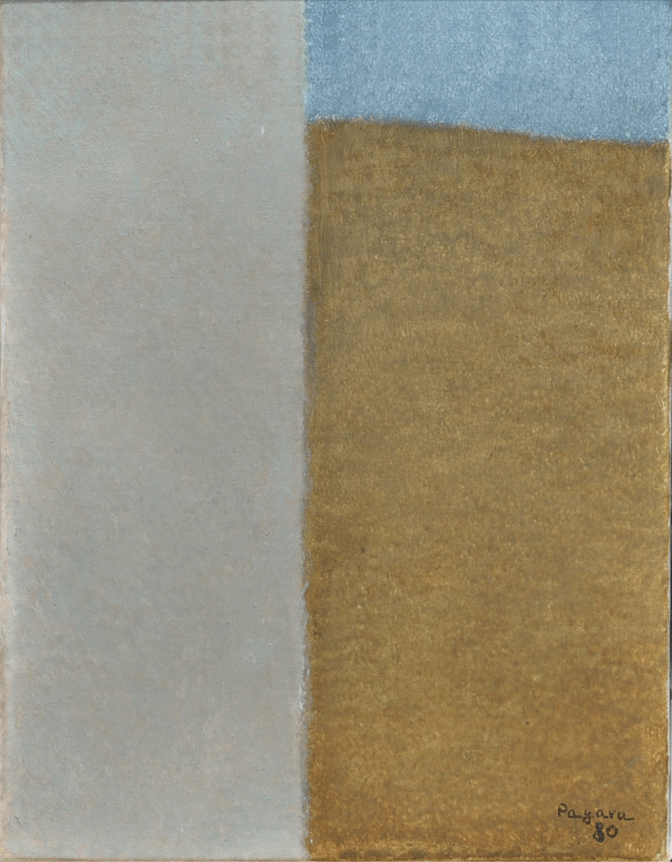
Vera Pagava. Porte ouverte. Oil, paper laid on canvas. 18x14. 1980. This work is part of ATINATI Private Collection
In 1966, Vera Pagava represented France at the 33rd Venice Biennale. The illuminated romantic landscapes exhibited in Venice were painted as watercolor pieces. They simultaneously showed nature and an abstract image, since the sun and the area encompassed by its light became the subject of the artist's reflection.

Vera Pagava. Untitled. 41,5x31. Watercolour, paper. Around 1963-68. Galerie Poggi, Paris/Courtesy of Association Culturelle Vera Pagava - ACVP
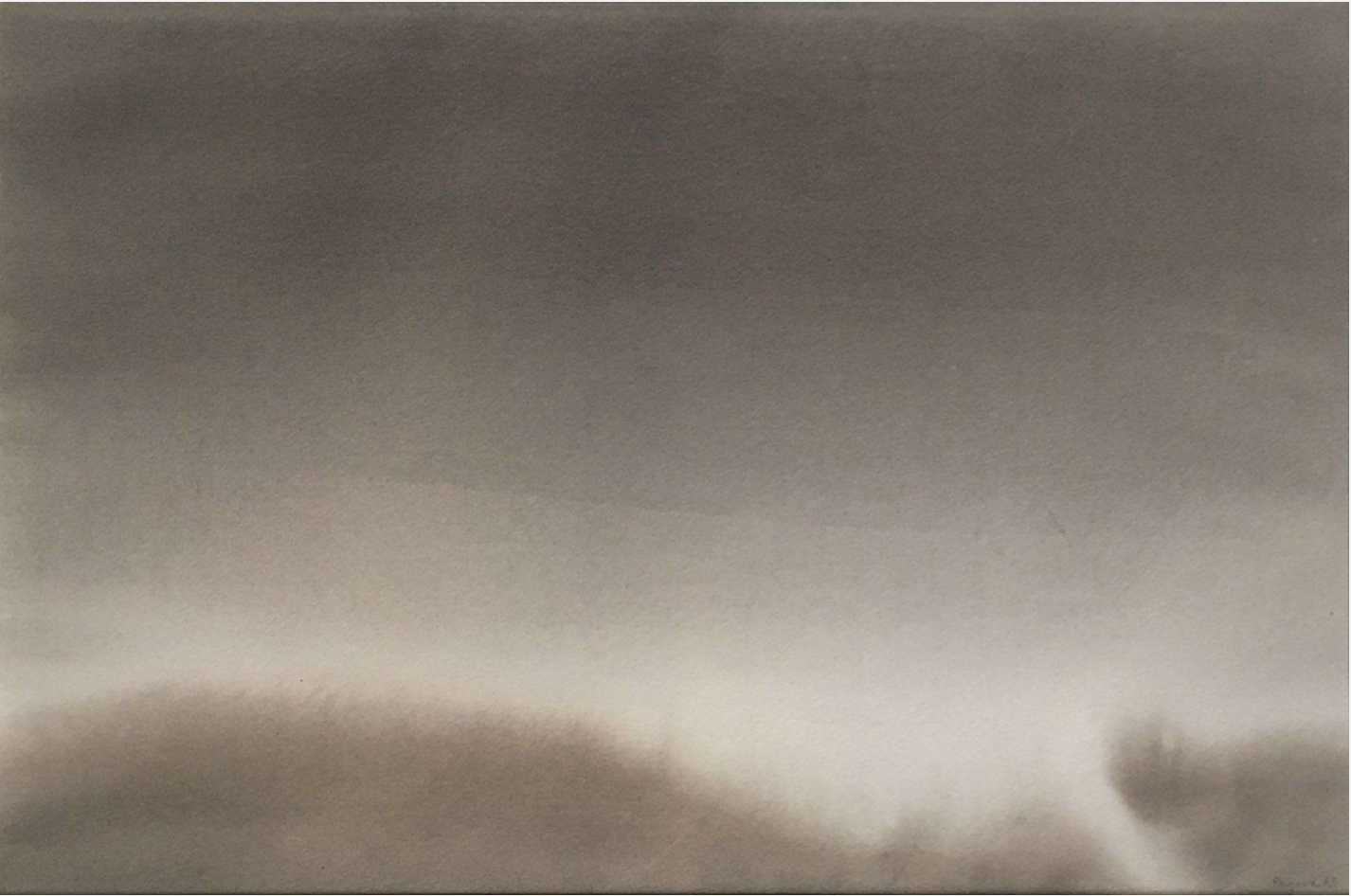
Vera Pagava. Untitled. 41,5x31. Watercolour, paper. Around 1963. Galerie Poggi, Paris/Courtesy of Association Culturelle Vera Pagava - ACVP
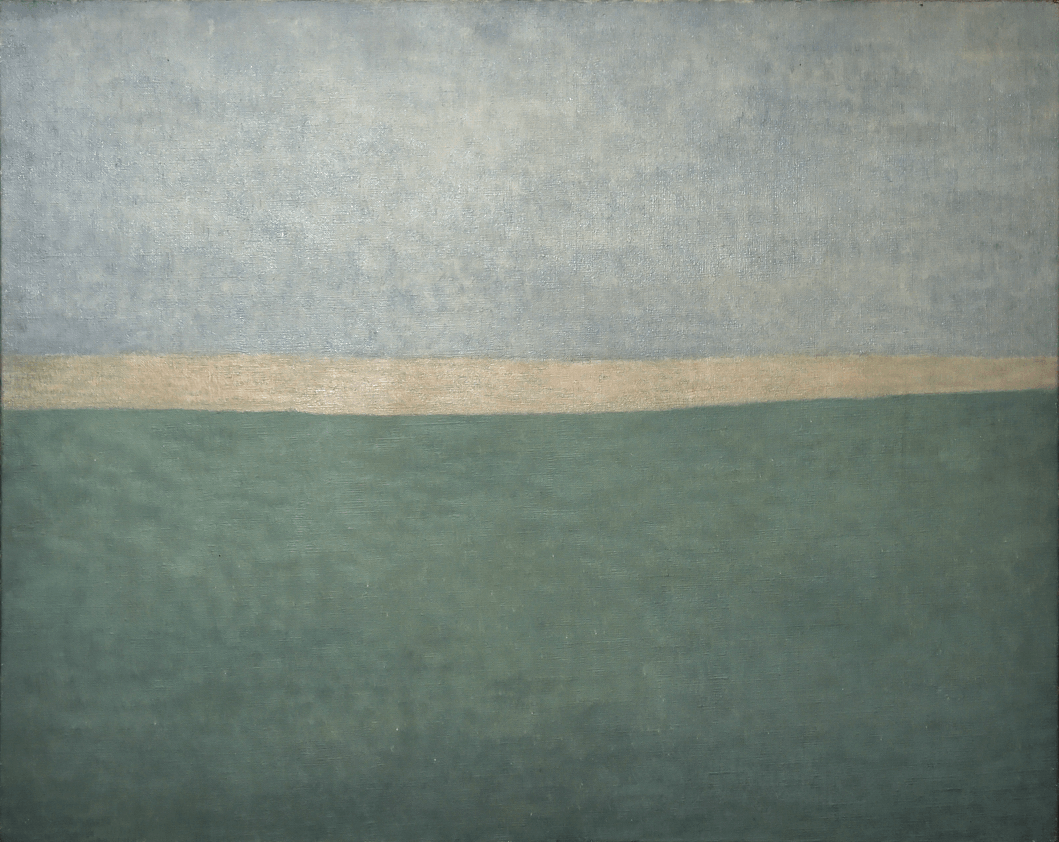
Vera Pagava. Horizon II. Oil, canvas. 73x92. 1962. This work is part of ATINATI Private Collection
Pagava's work reveals and reflects on the rich tradition of French painting and its relationship to the phenomenon of light. Her abstractions are based on and emerge from the blue skies of the Île-de-France, the transparency of the space and fullness of light; the lofty proportions of Gothic churches and the colorful light shed through their stained-glass windows. Her works display both the tradition of French art and the space that shapes the French environment – light that only radiates in this environment. Pagava's canvases demonstrate a specific clarity or separation of objects, their fragmentation into isolated forms; a peculiar lightness or absence of pressure, and again unity with light.
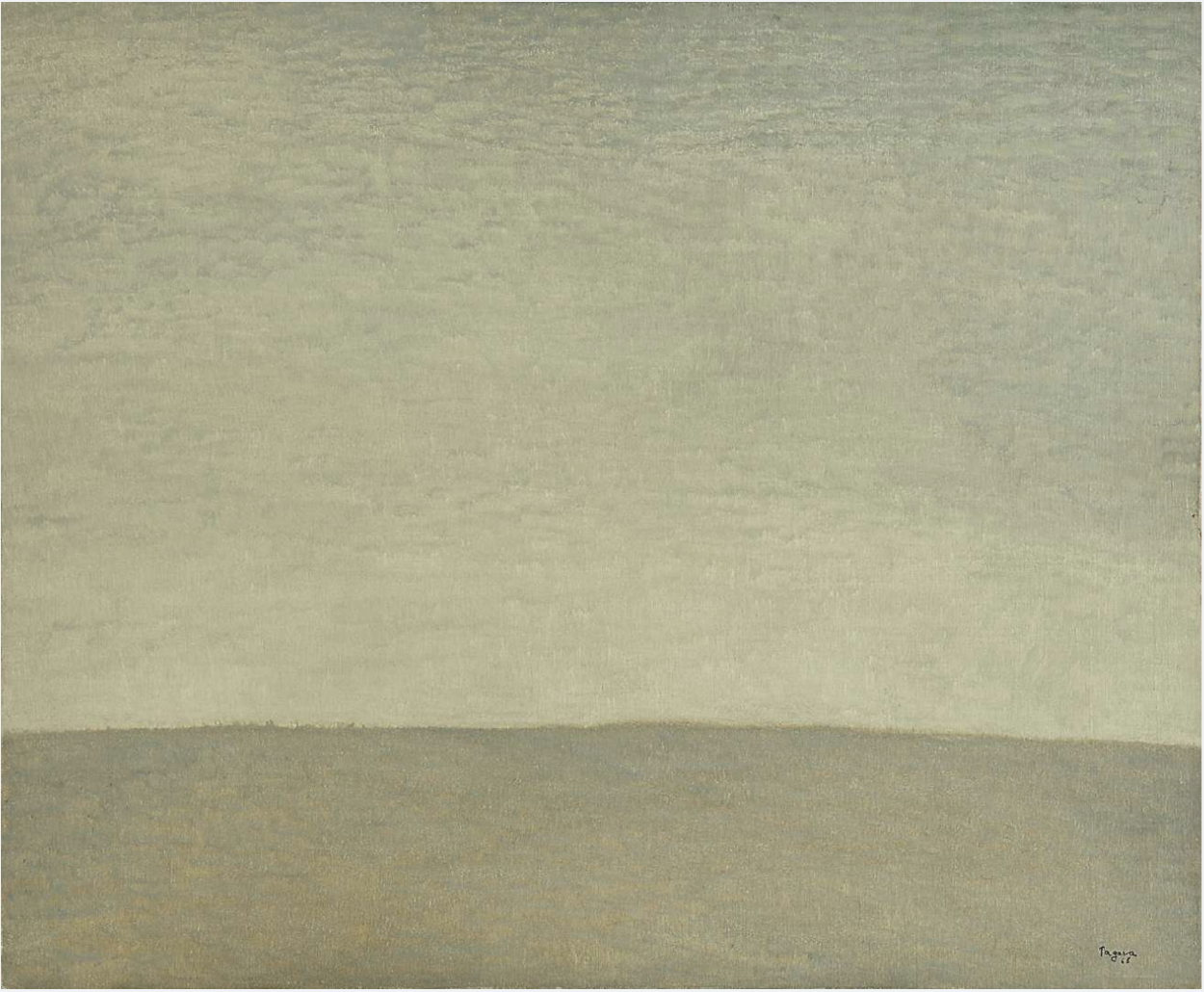
Vera Pagava. Silencieuse. 60x73. Oil, canvas. 1965. Galerie Poggi, Paris/Courtesy of Association Culturelle Vera Pagava - ACVP
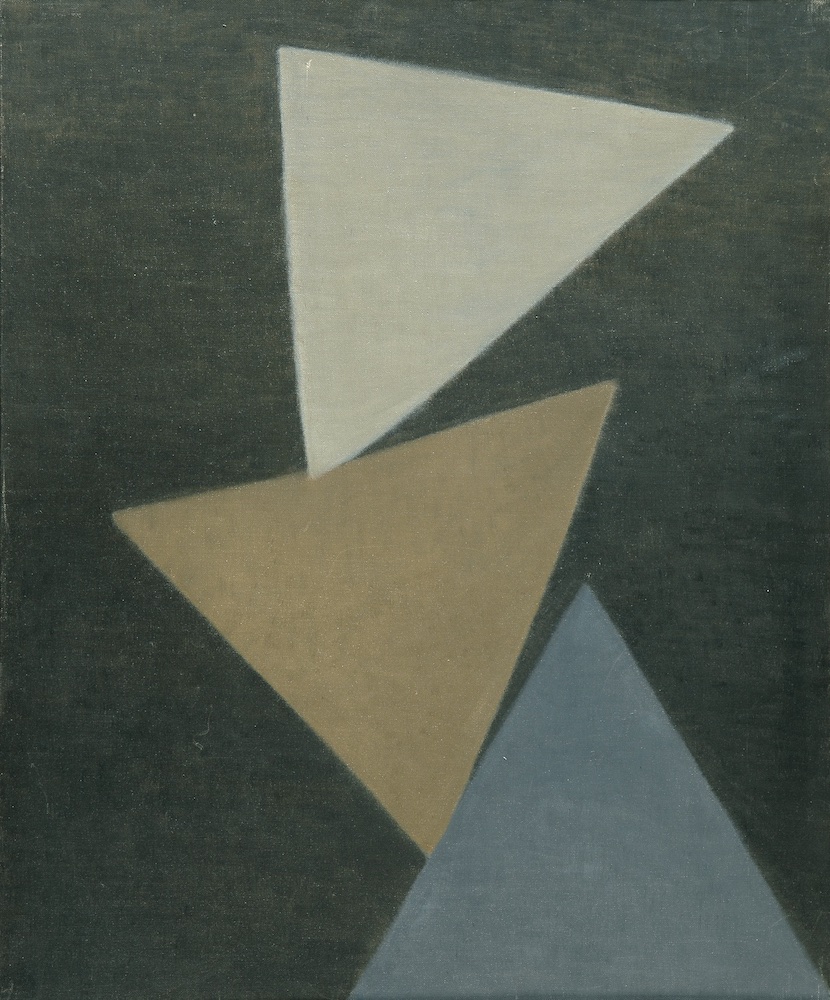
Vera Pagava. Glissade73 x 60. Oil, canvas. 1969. Courtesy of Association Vulturelle Vera Pagava - ACVP

Vera Pagava. Untitled. Oil, canvas. 33x41. 1980s. This work is part of ATINATI Private Collection
Vera Pagava was primarily inspired by the light apparent in nature. When given the opportunity, she skillfully used light as a "material" (and here we mean her stained-glass windows). In 1984, Pope John XXIII awarded the artist a gold medal for her stained-glass and interior design of the Church of St. Joseph in Dijon.
St Joseph Church of Dijon (France)
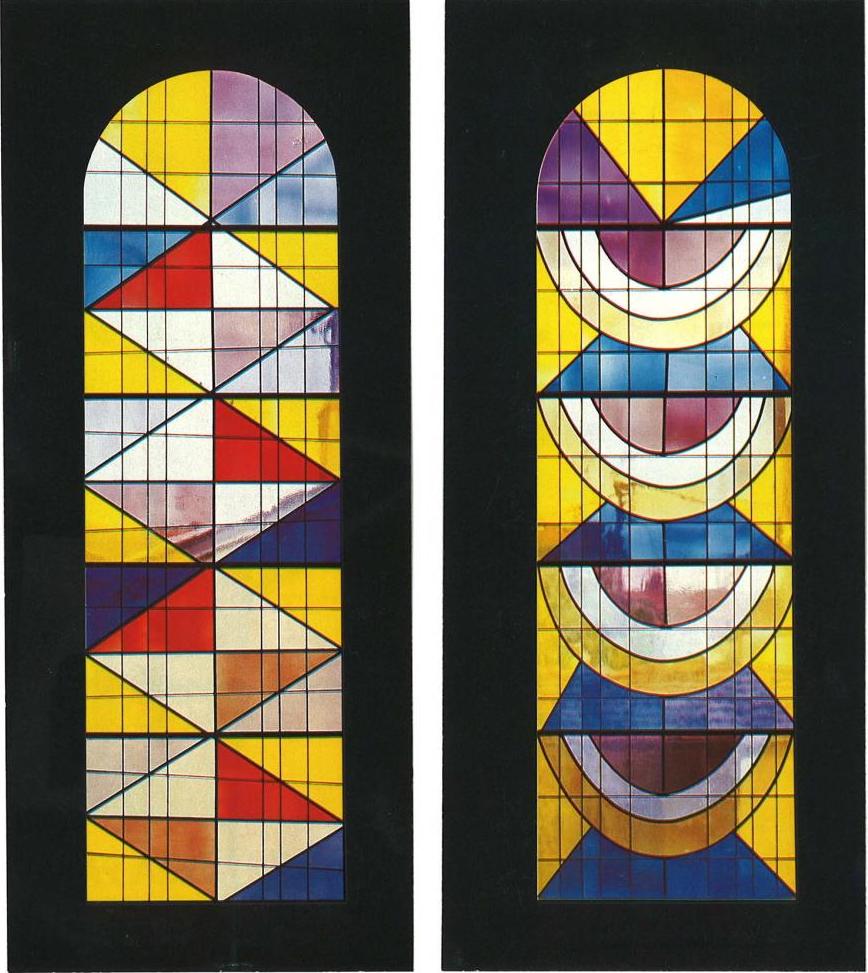
Untitled. Stained glass coll. 1986. St Joseph Church of Dijon (France). Courtesy of Association Culturelle Vera Pagava - ACVP
"Dialogue" with the sun, which often turns into a model, shapes the geometry that underlies simplicity and laconism achieved by Vera Pagava. All of the above demonstrate the strict logic and inner lyricism that jointly determine her signature originality.